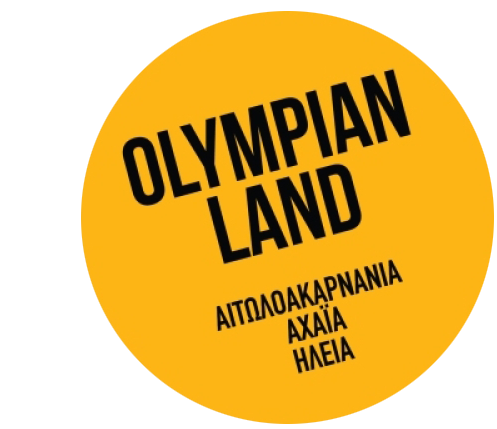The proposed project concerns the participation of the association with the printing of flags and banners of the Revolution of 1821 and the production of a video as a documentary - a short film about the area of Nea Figalia (Zourtsa) for the 200th anniversary of the History of Zourtsa 1821, in context of cultural events that will take place in Nea Figalia, Olympia with the unveiling of the bust of the Heroine of 1821 Adamantia Grigoriadis, who proclaimed the Greek Revolution in the Southwestern Peloponnese on 24/03/1821 raising the Greek flag in Zourtsa.
Kali of Zourtsa was the first in the region of Arcadia to be liberated by the Turks and in fact absolutely peacefully and without any battle. Since February 21, the Turks of Zourtsa had noticed the suspicious movements of the Rayads and immediately thought of suppressing any uprising. However, this was handed over to the captains of Zourtsa by Karanikolis, a loyal servant of Hussein Spahi who had attended the meeting of the Turks at Kadrispai's house. The Greek Zourtsani reacted immediately and it was spread that "if Zourtsa is disturbed, all the Turks will be slaughtered". At this point intervenes Spyros Pipilis (eldest son of Captain Georgakis), the most prudent and political of the local captains, who accepted the prestige and prestige of both the local Christians and the Turks. He had good relations with Aga and persuaded him 10 days before the Revolution that all the Turks of Zourtsa should go to Fanari, apparently for their safety (the threat of their slaughter had been sufficiently circulated), but essentially for the beautiful village not to be destroyed by the inevitable conflict.
Indeed, Agas accepts out of necessity and on March 21, 1821, 92 Turkish families leave for Fanari. There, the Zourtsani people also flattered that they were the first to be released "without untying their noses". The area is now becoming an important recruiting center for Greek warriors. On March 24, the Captains of Zourtsa with Athanasios Grigoriadis and his brother Georgios (the Grigoriadides came from Zourtsa) raised the flag of the Revolution in the capital of Fygalia outside the old church of Agios Nikolaos (then cemetery Neor Figalia). Then 350 Zourtsanos, under Georgakis, Spyros, Tzanetos and Diamantis Pipilaios, arrived in Arcadia where on the 25th Athanasios Grigoriadis from Zourtsas raised the flag of the Revolution. On the 27th they marched towards Neokastro, with the siege of which begins the entry of the Zourtsans into the struggle, who distinguished themselves and many sacrificed for their homeland. Specifically, the Zourtsani are distinguished in the battles of Valtetsi, Lala, Trikorfa, Dervenakia and Drambala. Under Diamantis Pipilis they passed to Megara and reached Livadia and Orchomenos. This was followed in 1825 by the terrible invasion of Ibrahim with 23000 Turkish-Egyptians. In October 1825, Ibrahim launched a campaign against the areas of Fanari and Arcadia, and attacked with strong forces against Zourtsa, which was supported by Athanasios Grigoriadis with his military unit. The Zurcan fighters fought fiercely against Ibrahim but Zurca was eventually captured and set on fire by Ibrahim's forces. The Zourtsani fighters together with all the Arcadians fought in many more battles against Ibrahim under Athanasios Grigoriadis (Tripoli, Klidiou-Samikou, Almyros). Zourtsa has been quiet for almost 2 years from Ibrahim's raids. In April 1827 Ibrahim attacked again and recaptured it and set it on fire. The Arcadians (and the Zourtsans) under the General Chief Athanasios Grigoriadis still fought (1827) in the battle of Aetos, Dervenia, the Monastery of Kalavrita, Kanakeria and Alfeios. At the end of 1827, Ibrahim again attacked the Province of Arcadia and recaptured the long-suffering and historic Zourtsa. Then Ibrahim did not cross Zourtsa again and finally in 1828 Ibrahim's final defeat occurred.
From the beginning of 1821 until the end of 1828, for a total of eight years, the Zurchans fought vigorously against the Turks and many sacrificed themselves for the freedom of our homeland. Athanasios Grigoriadis was really a worthy leader. After the liberation of Greece, he received the rank of Colonel of the phalanx and the Silver Excellence.
After the restoration of the State and during the first years of the Kapodistrian era (1828-1831) Zourtsa was designated the capital of the Prefecture with the first Prefect (Commissioner of Administration) the elder Konstantinos Tsounis from Drovolovo (Memorial S. Pipilis).
The Elder of Moria Theodoros Kolokoktronis is known to have had a great love for Zourtsa and many friends there. He really liked Kefalochori and considered it the best of Moria, which he knew very well as he visited it often. He used to say to his acquaintances: "Patras state and Zourtsa country" to emphasize the importance of. In 1833 the Greek General chose Zourtsa from all over the Peloponnese for the meeting of all the captains.
Speaking now about the demographics of the time, according to Academician Achilleas Tagaris and his book, the population of Zourtsa in 1821 was about 2500 (of which 1000 Turks), while in 1835 only 700 as there were large losses due to the Race. 44 years later in the official census of 1879 it will number 1505 inhabitants (see section Demographic data), a sample of the rapid development of the town during the first years of the creation of the Greek state.
During the reign of Otto in Bavaria in 1833, as part of the reform of the mergers of the Holy Monasteries that at that time had less than 6 monks, the historic Monastery of Zourtsa Theotokos Ligovais (male) was closed and all the property of the monastery was divided to the inhabitants by lot.
PLACE: NEW OLYMPIA BRANCHES, MUNICIPALITY OF ZACHARO ILIA
TIME: SEPTEMBER 30, 2021.










